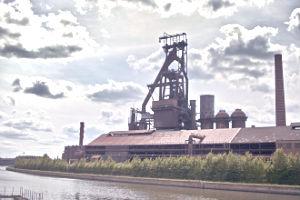 A good selection of equipment, as well as an analysis of what the real needs of a company are, allow us to reach an optimal level of utilization, in which the installed capacity perfectly meets the demands of the plant.
A good selection of equipment, as well as an analysis of what the real needs of a company are, allow us to reach an optimal level of utilization, in which the installed capacity perfectly meets the demands of the plant.
By Alejandra García Vélez
Undoubtedly, the decrease in operating costs and the search for greater efficiency in the system will always be concerns of refrigeration technicians when analyzing the performance of production plants. But finding the balance between the selected capacity and the actual capacity required to reach an optimal operating point is no easy task.
Precisely, that was the topic addressed by Mauricio Baena, Manager Thermal Engineering S.A.S., one of the guest speakers at the eighth version of RefriAméricas 2011 that was held in the city of Medellín on June 16 and 17.
"Selected capacity vs. real capacity required: avoid over/underuse in your production plants" was the title of the talk led by this professional in which he addressed, among other things, some parameters to take into account to optimize the performance of equipment and processes within the plant.
Resource optimization
The possibility of taking better advantage of the company's technology, having a lower initial investment, a clear identification of the operating points of the system, greater efficiency and lower operating costs are some of the reasons why it is important to evaluate what is the real capacity required so that the operating parameters can be modified.
The first step in this assessment is to accurately forecast the thermal load based on the specific cooling need; to achieve this, the initial reconnaissance work should be as complete as possible and should include an analysis of the design ambient temperature, storage temperature and relative humidity. Dimensions, insulation, type of construction and orientation must also be taken into account, as well as infiltration to thermal load by air change, the product to be cooled and miscellaneous loads.
This is important insofar as it allows to guarantee a reliable and profitable operation, while facilitating a proper selection of equipment. "Before starting to define the equipment of a cooling system, they must do a conscious job and have enough information to be able to make a judicious calculation of the thermal load necessary to overcome," baena said.
"Once you have these design parameters clear, you should try to make the best use of the available technology both in understanding and in heat exchanges in order to select the most efficient option," he added.
But these are not the only factors to consider. When sizing the refrigeration load there are other considerations; for example, one should think about the issue of location, investment in infrastructure and production scheduling. According to Baena, these variables often do not require a financial investment, on the contrary they allow access to refrigeration equipment of lower value generating savings for the company.
Efficient cooling
For the expert, one of the key points that must be addressed is the storage temperature and relative humidity. In that sense it is important to remember that the nature of the product determines the desirable relative humidity in the storage chamber and this, in turn, dictates the approximate DT between the air inside the chamber and the refrigerant in the evaporator.
To the above Baena added that around the chambers it is necessary to define the external temperature to calculate the transfer by walls. Also, around the equipment, the condensation temperature design of the compressor, the ventilation for the machine room and the size of the condenser must be defined.
As for the infiltration of thermal load by air change, Baena pointed out that heat enters an enclosure through the openings of the doors. "Knowing the location, the size, the number of doors, and the temperature to which they are exposed, it will be easier to determine the thermal load by infiltration."
Likewise, Baena recalls that the number of air renewals per hour are essential to achieve a more efficient system. To choose the ideal parameter, the objective of the cooling system and the type of process to be carried out must be taken into account.
The professional recommends, for example, a minimum of 40 and a maximum of 80 air changes for freezing conservation processes; between 20 and 30 for cutting chambers, for meat cooling chambers it recommends between 80 and 120 and between 150 and 300 for quick freezing tunnels. In general, Baena indicates that the formula to find the ideal number of renewals is:
Q (flow in m3/hour) = volume of the fourth X renewals/hour.
Final Considerations
Although the above annotations can and should be taken into account preventively; there are also factors that may indicate that there is an overuse. Generally, premature wear of equipment, continuous cycling of equipment and constant operation at excessive pressures are indicators that it is necessary to evaluate the operation of the plant.
A specific example that Baena shares refers to a dairy company, in which after an evaluation it detected that the receipt of milk was being combined with pasteurization. This created a power demand of 100 h.p.; but when talking to the production area it was decided that the two receipts could be separated and in this way the size of the equipment decreased to 50 h.p.
In that sense, Baena's final recommendation to avoid overusing or underusing the plant is "to study very well the variables outside the border of what is going to be refrigerated and that affect the thermal load".













